Dear friends, well met. If spring brings with it the awakening of nature, Easter celebrates this renewal with its symbols and traditions. Among these, the Easter Colomba certainly represents an indispensable dessert (like the classic Easter egg), telling a story that has its roots in Italian culture and innovation.
The origins of the Easter Colomba Cake
The birth of the Easter Colomba is a fascinating journey that takes us to Milan, in the heart of the Italian confectionery industry of the early 1900s. Here, the Motta family, already known for the famous Christmas panettone, finds itself reflecting on how to exploit the same machinery to create a new Easter dessert.
The brilliant idea materializes in the Colomba Pasquale: a leavened dessert that shares basic ingredients with panettone but stands out for its unique shape and covering of almond paste and sugar. Its creation not only responds to production needs, but is deeply immersed in Christian symbolism, where the dove is an emblem of hope and rebirth.
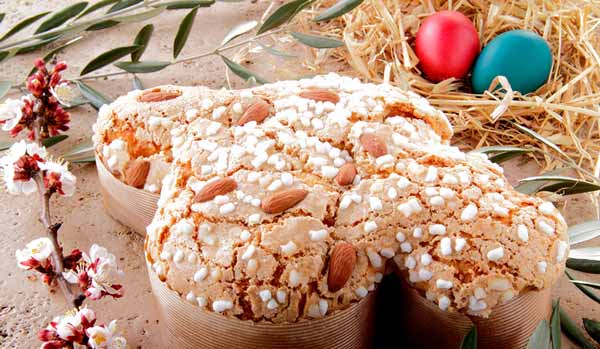
From panettone to colomba: The invention of Dino Villani
The ingenious transformation of the machinery used for the production of Christmas panettone into tools for the creation of Easter Colomba marked a decisive turning point for the Italian confectionery industry. We owe this innovation process to Dino Villani, a key figure in the collaboration with Motta, who had the intuition not to leave the machinery in disuse after the Christmas period, but to adapt them to produce a new dessert that could symbolize Easter.
Villani’s idea was not only practical but also deeply symbolic, trying to create a link between the Christmas dessert par excellence, panettone, and a dessert that could represent Easter with the same intensity.
The result of this innovation was a leavened dessert which, in addition to sharing some fundamental ingredients with panettone, such as flour, eggs, butter and sugar, and the addition of candied orange peel and a rich crust of almonds, thus offering unique freshness and crunchiness.
Symbolism and tradition
The shape of the Easter Dove, inspired by the Christian tradition, is not a mere aesthetic detail but a profound symbol of peace, hope and rebirth. This symbolic link with spring and awakening nature makes the dessert not only a pleasure for the palate but also a rich nourishment for the spirit, celebrating the values of renewal and offering that characterize Easter.
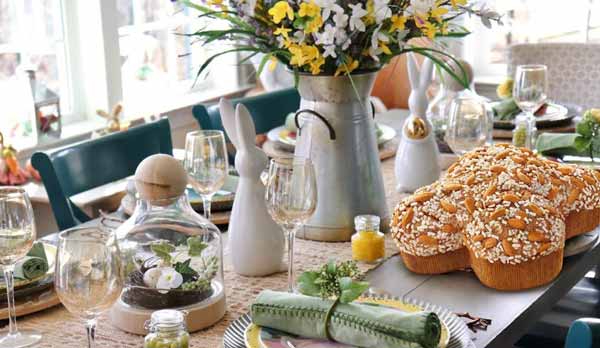
Myths and legends about the origin of the dove
Stories and legends are woven around the Easter Colomba, the sweet symbol of the Easter holidays, which amplify its charm, enriching it with a veil of almost mythological mystery. One of the most evocative narratives takes us back to the time of the Lombards, precisely to the city of Pavia, besieged for three years until the eve of Easter in 572. In this context, a sweet bread, whose shape evoked the peaceful one of a dove, was offered to the Lombard king Alboin as a sign of peace. This gesture, rich in symbolism, inextricably links the Easter Dove to a message of reconciliation and hope.
Another legend tells of San Colombano, who in 600, being at the court of the Lombard queen Teolinda with her monks, was offered a banquet of meat in honor of their visit. Respecting the period of penance, the saint miraculously transformed the dishes into white, leavened breads, similar in shape and color to doves. This story not only underlines the divine origin attributed to the dessert but also its link with purity and spiritual transformation.
The third legend takes us to the historic battle of Legnano, where the presence of pigeons landing on the Lombard banners was interpreted as a wish for victory and freedom. Army cooks, inspired by this symbol, would prepare dove-shaped desserts to celebrate the courage and independence of their men. These stories, although different, converge in underlining the role of the Easter Dove as a symbol of peace, hope and rebirth, weaving a web of meanings around the dessert that go far beyond its gastronomic value.
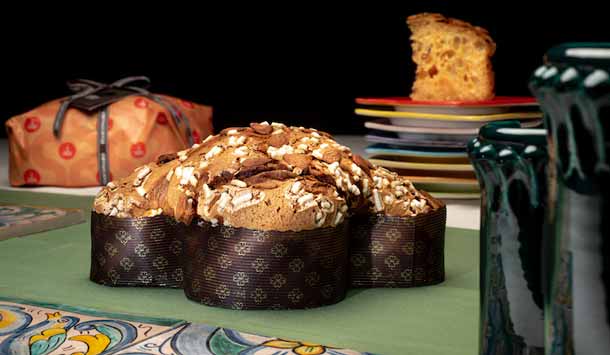
From mass production to the Artisan Colomba
However, the great diffusion of industrially produced Easter Colombe; it did lose something in terms of taste and quality. Not at home in recent years has arisen the need to search for traditional handmade sweets, hence the spread of Artisan Colomba Cake.
In the panorama of the production of Easter Colombe, a leading role has been taken on by high-quality master pastry chefs, who have been able to stand out for their ability to offer artisanal variations of this traditional dessert. Among these, Fiasconaro has established itself as an emblem of excellence</strong >, thanks to its dedication in choosing ingredients of local origin and the search for unique flavors that embody the richness and diversity of the Italian gastronomic heritage.
Fiasconaro, as well as other master pastry chefs, have revolutionized the tradition of artisanal Colombas, innovating with quality and authenticity. Their care in the selection of ingredients and in the creation of new flavors has transformed the Easter Colomba into a symbol of taste, celebrated in Italy and abroad. This approach, which combines tradition and precision, makes the artisanal colomba a symbol of celebration and Italian confectionery excellence, capable of telling the story of an art that is handed down from generation to generation through its flavors and aromas.
In concluding this journey through history, tradition and taste, it is clear that the Easter Colomba is not simply a dessert to be consumed during the holidays. Rather, it is an experience that unites families, friends and communities around the values of rebirth and hope that characterize Easter. The artisanal colomba, with its richness of flavors and its fascinating history, invites us to rediscover and celebrate these moments with authenticity and passion.
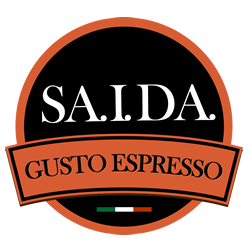
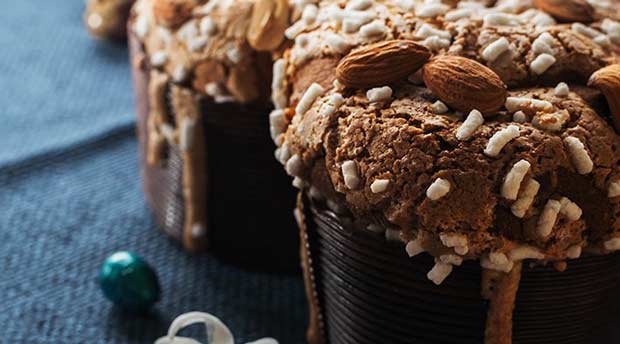
Visita il nostro e-shop e scopri tanti prodotti a prezzi vantaggiosi!